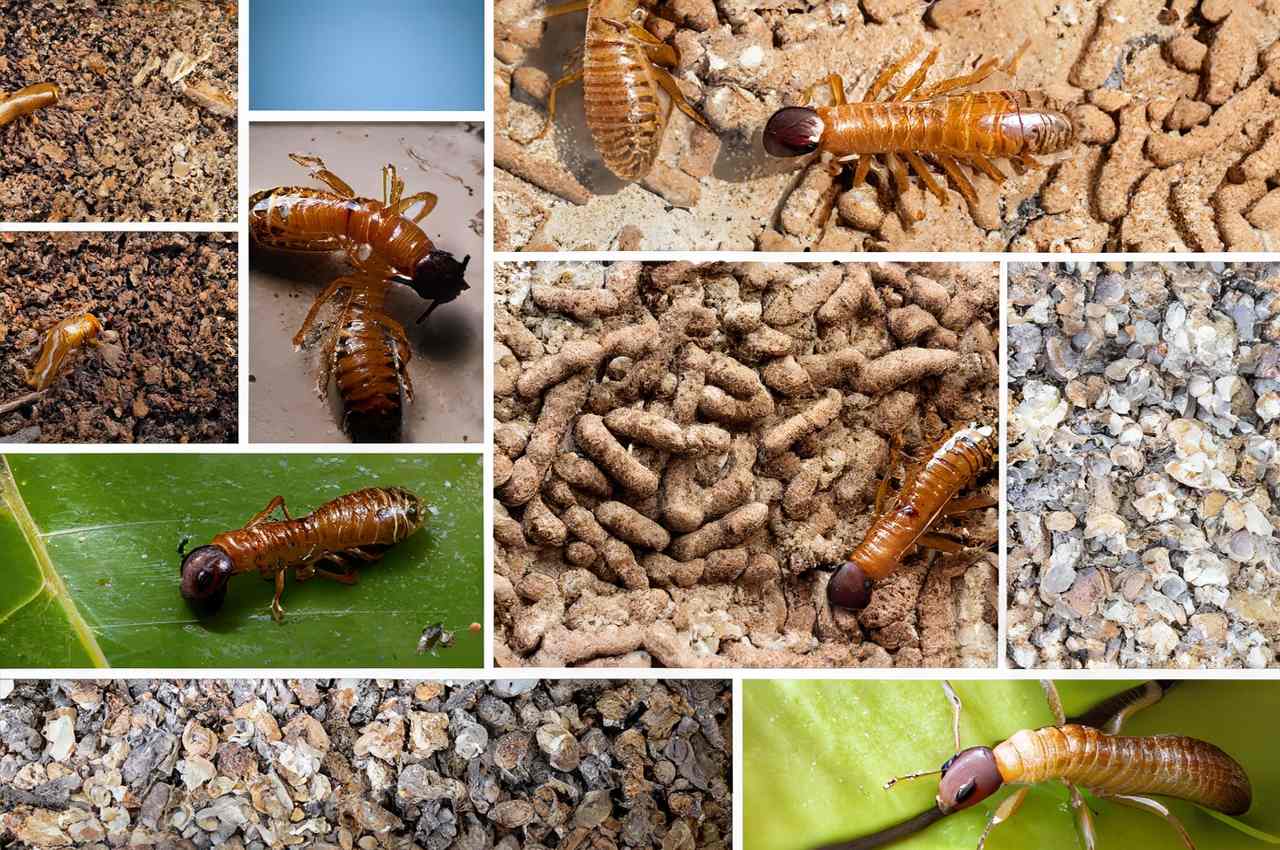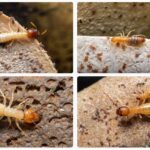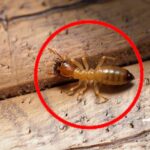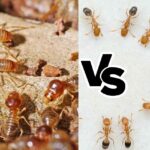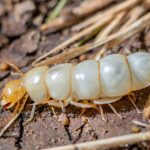Understanding What Color Are Termites can help distinguish them from other insects. Termites vary in color based on their species and caste. To identify the sort of termites that may be infesting your house, it is important to recognize their colors and physical traits. This page looks at the many colors that termites may have and how to recognize them by species.
Termite Caste Colors
| Caste | Color |
|---|---|
| Worker | White or Creamy |
| Soldier | Brown or Amber |
| Reproductive | Brown, Black, or Red |
Colors of Common Termite Species
| Termite Species | Color |
|---|---|
| Subterranean Termites | Cream to Dark Brown/Black |
| Drywood Termites | Pale Brown to Dark Brown |
| Formosan Termites | Yellow with Slightly Hairy Wings |
| Dampwood Termites | Light Yellow or Tan |
| Conehead Termites | Varies by Caste |
Color Variations in Termite Swarmers
| Termite Species | Swarmer Color Variation |
|---|---|
| Drywood Termites | Red or Brown |
| Subterranean Termites | Black or Brown |
| Formosan Termites | Brown or Black |
| Dampwood Termites | Brown or Black |
| Conehead Termites | Varies by Caste (Soldiers, Reproductives) |
What Color Are Termites?
Termites might be white, black, red, brown, pale yellow, or amber. Termites’ colors depend on species, caste, and age. Workers who care for eggs and forage are white and consistent among species.
Americans’ most common house invaders, subterranean termites, may be creamy cream to dark brown or black. Soldiers, with their big heads, are orange or amber, whereas reproductive or swarming termites, which create colonies, are light brown or black. Dampwood termites are pale yellow or tan, whereas drywood termites are red or brown. The aggressive Formosan termites are similar in color to subterranean termites but may exceed half an inch in length. Termites are a diverse insect group due to their varied colors.
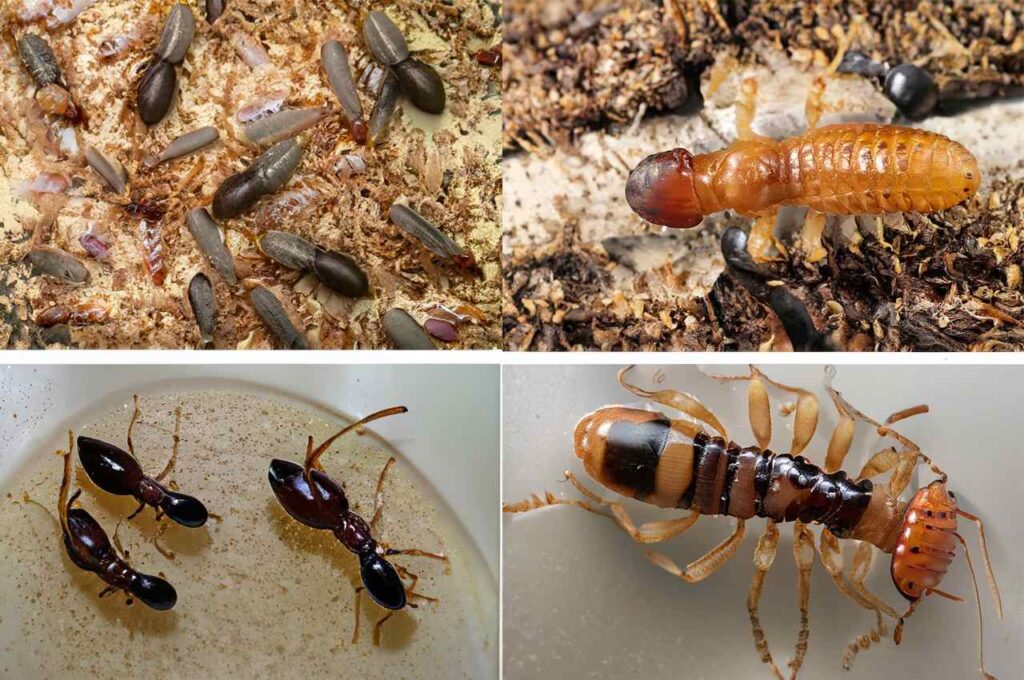
Here are some explanations of the color for various termite species:
Winged Swarmer Termites are Black or Brown
Termites usually have a dark brown or black color as they swarm and develop wings. The reproductive termites known as swarming termites go outside of the nest to mate and establish new colonies. They may be distinguished from the lighter worker termites by their black color.
Worker Termites are Usually White
The greatest caste of termites in a colony is the working caste. They often have a light cream color or a yellowish white color. They sometimes have an almost transparent appearance. The maintenance of the colony, caring for the eggs, and food hunting are the responsibilities of the workers.
Soldier Termites are Brown with Orange Heads
The colony is safeguarded and defended by the soldier termites. Although their heads have a deeper orange-brown color, they are often light brown in color. Strong jaws are located in the larger head for protection. Workers must feed the soldiers since they are unable to do it.
Termite Eggs and Larvae are White
The termite eggs are tiny, jelly-like, and transparent white within the nests. The termite larvae are similarly light white or cream in color after hatching. They acquire the colors unique to their caste as they develop into laborers, warriors, or reproductives.
Colors of Termite Eggs and Larvae
| Termite Life Stage | Color |
|---|---|
| Eggs | Translucent, Jelly Bean-like |
| Larvae | Similar to Eggs, May Change with Age |
Subterranean Termites Vary in Color
Underground termites build their nests and tunnel inside buildings. They are colored:
- Workers: pale cream colored
- Soldiers: orange-brown heads
- Reproductives: light brown to black
- Queen: dark brown head and thorax, whitish abdomen
Drywood Termites are Light to Dark Brown
Dry, unaltered wood is infested by termites. Inside of houses, they build colonies out of wooden materials. From light tans to deeper browns, they come in a variety of hues.
Formosan Termites Mimic Subterranean Species
Formosan termites are an invasive species in the US that are native to Asia and are very destructive. Across castes, they share the same colors as underground termites.
Dampwood Termites are Yellowish Tan
Usually pale yellow or light brown in color, dampwood termites live on moist, decomposing wood. The heads of soldiers are darker in color. Coastal regions are where this species is found.
Desert and Western Drywood Termites
Western drywood and desert dampwood termites are the most common in the arid southwest. They have a striking resemblance in color with other drywood and dampwood species.
Key Characteristics of Termites
| Characteristic | Description |
|---|---|
| Size | 1/4" to 1/2" (kings and queens may be larger) |
| Waist Shape | Straight |
| Antennae | Two Straight Antennae |
| Legs | Six Short, Stubby Legs |
| Wings | Four Wings, Equal Length of Body |
Termite in the Home Warning Signs
Look for:
- Mud tubes along foundations and walls
- Discarded wings
- Holes in wood structures
- Pale termites inside damaged wood
Termites vs. Ants: Understanding the Difference
Since both ants and termites swarm and have wings, the two are often mistaken. However, termites have equal-length wings, straight antennae, and straight waists. Ants have elbowed antennae, constricted waists, and forewings that are longer than the hind wings.
Color Differences Between Termites and Ants
| Characteristic | Termites | Ants |
|---|---|---|
| Color | White, Brown, Black, Red | Various (Including Red, Black) |
Frequently Asked Questions
What color are termites with wings?
Depending on their species, termites have different colored wings. While dampwood termites are often pale yellow or tan in color, drywood termites have reddish-brown or brown bodies and smoke-colored wings. The wings of formosan termites are somewhat hairy and have yellow bodies. Termites with wings typically vary in color from dark brown and black to light tan, while some may be white or transparent. The quantity of veins in their wings might also provide information about their species.
What color are flying termites?
Depending on their species, flying termites have different colors. While dampwood termites are normally pale yellow or tan in color, drywood termites often have red or brown bodies with somewhat translucent or smoky grey wings. Subterranean termites are dark-brown or blackish with wings that extend beyond their bodies, whereas Formosan termites have yellow bodies with somewhat hairy wings. The deeper hues help retain moisture and make it easier for flying termites to leave their nest. Other colors that flying termites might have are dark brown, tan, beige, black, or light colors.
What color are baby termites?
Termite eggs are normally white, yellow, or transparent and are sheltered within a nest when they are first laid. When these eggs hatch, they produce little termites called nymphs, which are transparent or white in color. These nymphs progressively change color as they become older, becoming the distinctive brown of adult termites. The young of certain species, like red termites, may have a reddish tint. These newborn termites migrate to the nursery chamber after hatching, where they are fed and cared after by worker termites as they grow.
What color are subterranean termites?
Depending on their species and caste, subterranean termites display a broad variety of colors. Soldiers have lighter overall appearances but darker heads than workers, who are often cream-colored and pale. Reproductives, often referred to as swarmers, are distinguished by their lengthy, dark brown to almost black bodies and their somewhat milky-colored transparent wings. These termites are normally between 1/4 and 3/8 inches long. In summary, depending on their caste and species, subterranean termites may exhibit hues like light cream, dark brown, or black.
What color are drywood termites?
The most common color of drywood termites is pale brown, which may range from dark brown to light, yellowish-tan. Drywood termite alates, often known as winged termites, feature characteristic vein patterns on their forewings and may have clear or smoky gray wings. The color of drywood termite colony soldiers may range from cream to brown. Alates, reproductive or swarmer drywood termites, may be brown or black in color. Furthermore, certain drywood termites might be transparent or white. In conclusion, the color of drywood termites may range from brown, cream, yellowish-tan, and even white or transparent forms, depending on the species and caste that they belong to.
What color are swarming termites?
Depending on their species, swarming termites, sometimes referred to as reproductive or swarmer termites, display a variety of colors. Flying ants may be distinguished from flying termites by their brown color and distinctive wing vein patterns. Formosan termites have yellow bodies and somewhat hairy wings, whereas dampwood termites often have light yellow or tan bodies. Swarmers or alates of subterranean termites are darker than other castes, appearing in shades of light brown (amber) to black. Overall, worker termites of all species are often pale and have a similar color, but reproductive termites might be brown or black.
Are termites black in color?
Yes, termites can be black in color, particularly subterranean termite swarmers, which typically have black bodies along with clear, veined wings. The color of termites may range from light cream to dark brown or black, depending on their species and caste within the colony; nevertheless, workers are typically white and almost uniform in color. As a result, although certain termite species and castes have black coloring, others may have diverse colors.
Are termites white in color?
Yes, termites can be white in color, particularly the worker caste, which typically has soft white or pale brown exteriors across various termite species. Soldiers have bigger heads and harsher exteriors while sharing the same color as laborers. A wider variety of hues, such as black, white, brown, or even being transparent, may be seen in reproductive or swarmer termites. The color of termites varies according on their species and function within the colony, although all workers have a pale look in general.
Are termites red in color?
Yes, termites can be red in color, specifically drywood termites, which typically have red or brown bodies. Termite color varies depending on the species and caste they belong to within the colony, with certain species and classes showing off distinct hues like pale yellow, tan, or even black. Different insect species, such as carpenter ants, are often red or black. As a result, certain species and castes of termites only have red coloring, while others might have a variety of hues, from off-white to dark brown.
Are termites red and black?
Yes, termites can be red and black, but the specific colors depend on their species and caste within the colony. Drywood swarmers are solid red, but subterranean termite swarmers are solid black. A few underground termite swarmers may also have reddish heads. Carpenter ants, a separate insect species, often have red or black bodies, whereas drywood termites commonly have brown or red bodies. Termites come in a variety of hues, depending on their species and position in the nest, including off-white, dark brown, red, and black.
Do termites have red blood?
No, termites do not have red blood. They are often considered to have clear or white blood. Termites may have a variety of hues, from red or brown to yellow or tan, depending on their species and caste. The hues of termites’ wings also differ across species, ranging from colorless to gray or brown. Worker termites are white and can seem transparent, whereas soldier termites are generally brownish in color and have pincers close to their heads.
Are termites brown or white?
Workers in termites are usually white. Termites underground varies in color from creamy cream to dark brown or black. Drywood termites range in color from light brown. Light yellow or brown termites inhabit dampwood. Yellow-bodied Formosan termites. Soldier termites are brownish, whereas reproductive or swarming termites are light brown (amber) or black. Depending on species and caste, termites are black, white, brown, or pale yellow.
What color is queen termite?
The color of a termite queen can vary depending on the species. Queens of subterranean termites may be pale yellow-brown to black, whereas secondary reproductives are white or extremely light, like worker termites. Drywood termite queens are yellow or brown. Queen termites are bigger than ordinary termites in the colony, measuring from a finger to 6 inches. While producing eggs, the queen’s body grows, but her head and legs retain the same size. A termite queen is immobile and spends her whole life in her breeding chambers due to leg weakness.
What color are wood termites?
Wood termites’ colors depend on their species and colony purpose. Drywood termites are pale brown to dark brown. Dampwood termites are pale yellow or brown, whereas Formosan are yellow-bodied. Subterranean termites, the most prevalent wood-destroying pests, vary in color from creamy cream to dark brown or black depending on species and caste. Wood termite coloring is closely tied to their species and position in the termite society.
Are termites black or white?
Termites can be both black and white, but their coloration depends on various factors such as species, caste, and age. Workers of all termite species are white, whereas underground swarmers are black with clear, veined wings. Drywood termites are pale brown, occasionally light yellowish-tan, whereas subterranean termites are pale cream to dark brown or black. Formosan and dampwood termites are yellow-bodied and pale yellow or brown. Soldier termites have brownish bodies and pincers near their heads, whereas reproductive or swarming termites are darker and light brown (amber) or black.
What colour are termites in Australia?
Depending on their species and caste, termites in Australia display a variety of colors. In contrast to ants, which are often darker in color, most Australian termite species are either white or light brown in color. Typically creamy white in color, worker termites have soft bodies but strong mouthpieces for eating wood. Alates or swarmers are often brown in Australia, but worker and soldier termites are frequently beige or tan. Australian termite species may also take on a brown, black, light brown, or white appearance. Some Australian termite species have heads with light orange coloring that resemble pointed snouts. Termite color in Australia often varies depending on the species and caste within the colony.
Conclusion
In conclusion, termite species vary in color. White, black, red, brown, pale yellow, and amber are among the possibilities for these small yet structured insects. Age, caste, and termite species impact color. Daily colony workers are white and uniform for all species. An average domestic pest, subterranean termites, might be light cream, dark brown, or black. Soldiers’ huge heads appear in orange or amber. Swarming or reproductive termites have darker, light brown, or black bodies for colonization. Drywood termites are red or brown, dampwood yellow or tan. The aggressive Formosan termites are bigger and colored like subterranean termites. Despite being concealed, termites’ colony duties and biology affect their remarkable color variation.
Knowing what color are termites can help homeowners to know what termite it is and protect their homes from damage. Early detection of an infestation enables rapid treatment to stop severe structural damage. Contact a pest control expert for an assessment and eradication strategy if you see termite indicators. Costly termite damage may be averted with quick intervention.
- How do termite mounds help regulate temperature? - 7 January 2024
- 10 Effective Termite Control Methods That Actually Work - 4 January 2024
- How Long Does It Take for a Termite Mound to Form? - 21 December 2023
